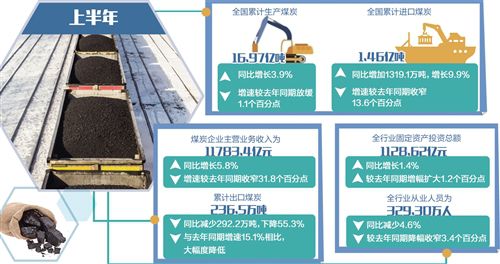来源:哔哩哔哩 时间:2023-06-14 09:57:10
Often benign and beautiful, there are so many potential dangers, often lethal, hidden in the natural world that our continued existence on the planet is actually quite astounding. Earthquakes, tsunami and volcanoes are some of natures more cataclysmic risks, but fade in comparison to the dangers presented by the more aggressive flora and fauna around the world.
There are two classes of creature that use chemicals in either attack or defence, but it is important to draw a distinction between those that are considered poisonous and those that are venomous. A poisonous creature is one that has a chemical component to dissuade potential predators; they usually secrete toxins through their skin so that their attacker is poisoned. A venomous creature, on the other hand, is not so passive – they use toxins not in defence but in attack. This differentiation is often seen in the colouring of the creatures in question – those with poisonous toxins are often brightly coloured as a warning to potential predators, whereas those classed as venomous are often camouflaged to blend in with their surroundings, making them more efficient hunters.
One of the most poisonous animals know to man is the poison arrow frog, native to Central and South America. Secreting poison through its skin, a single touch is enough to kill a fully grown human (in fact, the frog earned its name from the practice of putting tiny amounts of this poison onto blow darts used by the native population mainly for hunting and, historically at least, also for battle). It is interesting to note, however, that when bred in captivity, the dart frog is not actually poisonous – it generates its protection from its diet of poisonous ants, centipedes and mites.
 【资料图】
【资料图】
Another poisonous creature is the puffer fish, which is actually served as a delicacy in Japan. Although not aggressive or externally dangerous, its extremely high levels of toxicity cause rapid paralysis and death when ingested, and there is at this point no known antidote, hence preparation of puffer fish (called ‘fugu’ in Japan) is restricted only to licensed chefs, In the last ten years, it has been estimated that over 40 people have been killed by fugu poisoning due to incorrect preparation of the fish.
Although there are many hundreds, even thousands of poisonous fauna, the number of venomous animals on the planet far exceeds their number, perhaps the most well-known of which are snakes and spiders. In the snake world, the most lethal is the Inland Taipan. Able to kill up to 100 humans with the intensity of the toxin in one bite, it can cause death in as little as 45 minutes. Fortunately, they are not only very shy when it comes to human contact, there is also a known antivenin (cure), although this needs to be administered quickly. In the arachnid world, the spider that has been identified as being the most venomous is the Brazilian wandering spider. It is responsible for the most number of human deaths of any spider, but perhaps more alarmingly it is true to its name, hiding during daytime in populated areas, such as inside houses, clothes, footwear and cars.
When scientifically calculating the most venomous, there are two points which are considered: how many people can be killed with one ounce of the toxin, and how long it takes for death to occur. Without doubt, the overall winner in this category is the box jellyfish. Found mainly in waters in the Indo-Pacific area, they are notorious in Australia and have even been seen as far south as New Zealand. The box jellyfish has tentacles that can be as long as 10 feet (hence their other name ‘Fire Medusae’ after Medusa, a mythological character who had snakes for hair). Each tentacle has billions of stinging cells, which, when they come into contact with others, can shoot a poisonous barb from each cell. These barbs inject toxins which attack the nervous system, heart and skin cells, the intense pain of which can cause human victims to go in shock, drown or die of heart failure before even reaching shore.
SECTION 2: QUESTIONS 13-26
According to the information in the passage, classify the following information as relating to:
APoisonous creaturesBVenomous creaturesCBoth poisonous and venomous creatures
Write the correct letter, A, B or Cin boxes 13-15on your answer sheet
13__________ are protected by secretions on their skin.
14__________ are often colored to match the environment.
15__________ aggressively use toxins.
Do the following statements agree with the information given in Reading Passage 2?
In boxes 16-22on your answer sheet write
TRUEif the statement agrees with the informationFALSEif the statement contradicts the informationNOT GIVENIf there is no information on this
16________________ There is a common misunderstanding of the difference between poisonous and venomous
17________________ Significant environmental disasters are more damaging than animals
18________________ The poison dart frog obtains its poison from its environment
19________________ Touching a puffer fish can cause paralysis
20________________ The Brazilian Wandering spider kills more people every year than any other venomous creature.
21________________ The box jellyfish can cause death by drowning
22________________ The tentacles on a box jellyfish are used for movement
Answer the questions below.
Choose NO MORE THAN THREE WORDSfrom the passage for each answer.
Write your answers in boxes 23-26on your answer sheet.
What do the people of South and Central America principally use poisoned blow darts for these days? 23________________
The venom of which creature can be neutralised if medical intervention is swift? 24________________
Where does the Brazilian Wandering spider often sleep? 25________________
After whom does the box jellyfish have its other name? 26________________








创造与魔法金矿哪里多2022_创造与魔法金矿哪里多_天天播报



理想汽车北京顺义工厂最早7月投产?官方回应:确实在积极准备中 全球快报